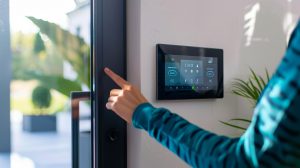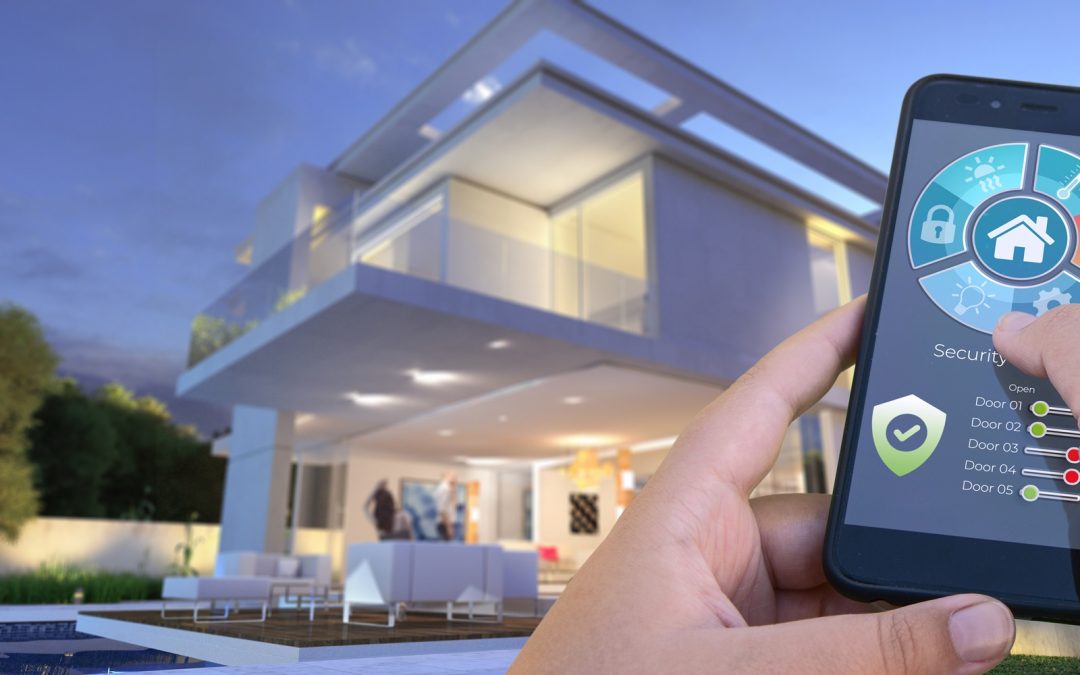The smart home game is blowing up. You’re hit with so many choices – lights that change color with your voice, thermostats you can talk to, locks you control from your phone. It’s super cool but can also be a lot to take in.
No worries—this post has got your back! This handy checklist will walk you through all the important stuff to think about before going all-in on a tech-savvy pad.
1. Leverage the Power of NFC
NFC (Near Field Communication) might not be the first thing that springs to mind when you think of home automation, but it can be a surprisingly powerful tool.
Here are some NFC tag ideas to get you started:
- Door unlock: Program an NFC tag to automatically unlock your smart lock when you tap it with your phone as you approach the door.
- Scene activation: Create a scene in your smart home app that adjusts lighting, temperature, and music. Embed an NFC tag near your bedside table to activate this ‘good night’ scene with a tap.
- Quick connect: Guests coming over? Program an NFC tag to instantly share your Wi-Fi network password when they tap it with their phone.
Neat, right? NFC tags are cheap, versatile, and can trigger a variety of home automation work–turning on lights, adjusting the thermostat, even starting your favorite playlist.
2. Identify Your Needs and Budget
Before smashing that ‘buy now’ button on a tricked-out smart fridge, hold up a sec. What do you actually want your pad to do? Boost security? Make life more convenient? Save on energy bills? Jot down what matters most to you. This’ll keep you from going overboard on impulse buys and zero in on the smart home gizmos that’ll truly make your life better.
Once you’ve got your wish list, figure out how much dough you can realistically drop. Smart home setups can be surprisingly wallet-friendly, but there are also some seriously pricey options out there. No need to go broke trying to turn your crib into a full-blown sci-fi flick.
3. Consider Compatibility
The worst-case scenario for your smart home? A chaotic mix of devices that don’t talk to each other. Standardize on a smart home platform like Zigbee or Z-Wave to ensure your home automation devices communicate seamlessly. This creates a more streamlined and user-friendly experience.
If you’re worried about locking yourself into one ecosystem, some devices are compatible with multiple smart home platforms. Do your research to find solutions that fit your needs and budget.
4. Start Small, Scale Gradually
Don’t go all-in right away. Start with a few key home automation devices–maybe some smart plugs or a voice assistant like Google Home or Amazon Echo. Experiment, see what works for you, and build on that foundation. This way, you avoid buyer’s remorse and can tailor your smart home to your specific preferences.
Remember, home automation is a journey, not a destination. Enjoy the process of creating a space that’s both comfortable and convenient with the help of smart home products.

5. Prioritize Security
Security is paramount. When you’re automating things like door locks and thermostats with a home automation system, you’re opening up new entry points for potential threats. Here’s what you can do:
- Choose devices with strong encryption protocols.
- Use unique and complex passwords for all your smart home devices.
- Enable two-factor authentication wherever possible for added security.
- Keep your smart home hub and device firmware up to date.
A little vigilance goes a long way in protecting your smart home from prying eyes.
6. Embrace Automation Routines
One of the biggest benefits of a home automation system is automation. Set up routines that streamline your daily life. Imagine living room lights automatically turning on when you walk in the door, or the smart thermostat adjusting based on your location. These routines save time, energy, and create a more responsive living environment.
Most smart home hubs and apps allow you to create custom automation routines. Explore the possibilities and get creative with your home automation ideas!
7. Think About Voice Control
Voice control can be a game-changer. Imagine dimming the living room lights or adjusting the Nest Learning Thermostat with a simple voice command. It’s convenient, hands-free, and lets you control your smart home from the comfort of your couch (or even while lying in bed!).
If voice control is appealing, choose smart home devices compatible with popular smart speakers like Google Home or Amazon Echo. This opens up a world of possibilities and makes interacting with your smart home even easier with voice assistants.
8. Additional Tips to Keep in Mind
Here are some bonus tips you might want to consider:
- Focus on User Experience: A smart home automation system should make your life easier, not more complicated. Prioritize devices and apps that are intuitive and user-friendly.
- Embrace the Power of Routines: We mentioned automation routines earlier, but they deserve another shout-out. The more you automate tasks with your home automation system, the more you’ll reap the benefits of a truly smart home.
- Think Outside the Box: Don’t limit yourself to traditional smart home devices like smart lights and smart thermostats. Consider smart sprinklers, robot vacuums, or even connected pet feeders. The possibilities are endless for smart home automation!
Final Thoughts
Ready to ditch the remote and embrace a smarter way of living? This checklist equips you to navigate the exciting world of home automation. Don’t wait! Take the first step towards a more convenient, secure, and personalized home today!

Recent Comments